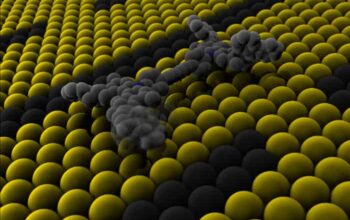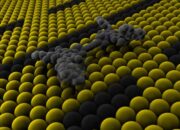Quantum chemistry represents the intersection of quantum mechanics and chemistry, allowing scientists to unravel the complexities of atomic and molecular systems. In this realm, computational software serves as an invaluable tool, akin to a master painter wielding brushes that render the elusive details of chemical systems. This article elucidates the paramount software tools utilized in quantum chemistry calculations, each possessing distinctive qualities that cater to varied research needs.
Just as a symphony comprises an intricate orchestration of instruments, the world of quantum chemistry software is a diverse ensemble, each program contributing its own unique notes. The most eminent of these is Gaussian, a stalwart in the field, renowned for its versatility and robustness. Gaussian offers a suite of methods ranging from Hartree-Fock to post-Hartree-Fock methodologies, enabling researchers to delve deep into electronic structure, reaction pathways, and thermodynamic properties. Its capability to handle large systems and accommodate intricate basis sets underscores its status as a benchmark within the quantum chemistry community. Furthermore, the software’s user-friendly interface facilitates a smooth workflow, inviting both novice and seasoned chemists to explore its depths.
Another titan in the quantum chemistry arena is ORCA, a program that strikes a balance between accessibility and sophistication. ORCA is free for academic use, making it an enticing option for students and researchers working within budget constraints. Its extensive functionality encompasses molecular mechanics, excitations within multidimensional systems, and comprehensive electronic structure calculations. The allure of ORCA lies in its ability to integrate various computational techniques seamlessly, thus allowing users to customize their approach. It serves as a lab partner, adaptable to the peculiarities of each experimental endeavor, which is invaluable in the quest for new discoveries.
For those who lean toward open-source solutions, Quantum ESPRESSO emerges as an optimal choice. This software suite thrives in simulating periodic systems and electronic properties, leveraging density functional theory (DFT) to investigate a plethora of materials science problems. The community-driven nature of Quantum ESPRESSO fosters an environment of collaboration and innovation, making it particularly appealing to researchers who thrive in a collective atmosphere. Like a bustling marketplace of ideas, open-source platforms provide a range of tools that evolve in tandem with the needs of users, strengthening the fabric of scientific inquiry.
To venture into the realm of materials science and solid-state physics, one cannot overlook the capabilities of VASP (Vienna Ab-initio Simulation Package). VASP has earned its reputation for high-performance computing, particularly in the study of crystal structures and their electronic properties. Much like a skilled architect meticulously drafting blueprints, VASP allows researchers to predict material behaviors with remarkable precision. This robust software employs a range of methods, including DFT and hybrid functionals, making it an indispensable resource for those endeavoring to engineer innovative materials.
Moving further along the spectrum of quantum chemical exploration, GAMESS (General Atomic and Molecular Electronic Structure System) stands as another formidable contender. GAMESS is celebrated for its comprehensive implementation of quantum mechanical methods, promoting advanced calculations that span molecular, atomic, and solid-state computations. Its command over time-dependent DFT calculations uniquely sifts through complex electromagnetic interactions, allowing for the evaluation of excited states with clarity. Like a skilled detective poring over case files, GAMESS elucidates the interactions within molecular systems, thus enriching our understanding of fundamental chemical principles.
Within the domain of quantum dynamics, the software propagation methods can utilize a tool such as iOpenShell. This robust setup is specifically designed to handle open-shell systems and post-Hartree-Fock techniques. iOpenShell allows researchers to explore the intricate dance of electrons in a much more complex manner than traditional methods would permit. It represents a bridge to unchartered territories in the study of radical species and reaction mechanisms. The vivid portrayal of electron interactions as they engage in dynamic exchanges invigorates our comprehension of chemical kinetics.
The interplay of these software packages creates a rich tapestry woven with threads of complexity and innovation. The unique appeal of each application lies not only in its technical prowess but also in its capacity to inspire creativity. For chemical researchers, selecting the most appropriate software becomes an exhilarating journey akin to choosing the right instrument in an orchestral performance—each selection resonating with the harmony of their specific research ambitions.
In conclusion, the landscape of quantum chemistry calculations is adorned with an array of formidable software tools. Gaussian, ORCA, Quantum ESPRESSO, VASP, GAMESS, and iOpenShell each possess distinctive merits that cater to a multitude of scientific endeavors. As the field advances, these computational tools unravel the complexities of quantum systems, propelling the frontiers of knowledge ever further. Much like the relentless pursuit of a deeper understanding of the universe, the exploration of quantum chemistry software epitomizes the spirit of inquiry and innovation that resides at the heart of scientific discovery.










